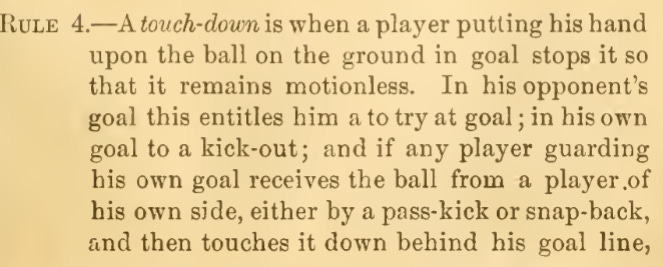1883 Scoring
We’ve talked about the scoring rule developments of 1883 in the past:
Interestingly, there is a football guide that dates to 1883 that can be accessed for free online. This comes from Retroseasons:
With the November 1882 date, it’s pretty safe to assume that all intercollegiate games in 1883 played under these rules.
Walter Camp’s scoring system is on page 8:
It’s not clear what “it shall require two safeties to decide” means for tiebreakers. I’m also having a hard time picturing how frequently two teams would wind up tied in the end under this scoring system if they weren’t also tied in the number of safeties scored.
My guess is that this sentence was added to disincentivize using safeties as a defensive weapon, which is something that really harmed the sport in 1880, 1881, and 1882. I’m not certain that this rule provided enough of an incentive, however.
The difference between “goal obtained by touch-down” and “touch-down failing goal” makes a bit more sense when you understand what the definition of a “touch-down” was:
Basically, scoring a touch-down entitled the team to either a place kick from a spot parallel to where the ball was touched down (similar to rugby), or a “punt out” in hopes of a fair catch free kick.
It seems from these rules that a touchdown was worth only 2 points and that the try after touchdown accounted for the other 4.
Let me know what you think, and if I got anything wrong.








